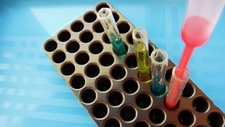Kinds of Evidence

TEKS Objective
The student is expected to analyze data and interpret patterns to construct reasonable explanations from data that can be observed and measured.
Essential Understanding
The student uses scientific inquiry methods during laboratory and outdoor investigations.
Science Background
Analyze and Draw Conclusions: Discovery Education (website) - This article provides insight on helping students to conducting science investigations, and to look for/identify patterns in the data they collect.
Analyze and Draw Conclusions
Discovery Education , http://school.discoveryeducation.com
Data, Statistics: Visionlearning (website) - Detailed information on statistical terminology, the role of statistics in describing data variability and reliability, and the relationships between variables. Includes references for further reading and links to related learning modules.
Data, Statistics
Visionlearning, http://www.visionlearning.com
Signature Lesson
Inquiring Minds: National Institutes of Health (website) - Students use observation to collect and analyze data, and the use their data to construct reasonable explanations about what is on the bottom of a “mystery cube.”
Inquiring Minds
National Institutes of Health , http://science.education.nih.gov
- Supporting Lessons
- Extensions
- Assessment Ideas
- Literature Connections
- Related
TEKS - Additional Resources
Supporting Lessons
The Mystery Box: Perkins School for the Blind (website) - Students use their senses of touch and hearing to investigate, measure and describe different household “mystery objects.”
The Mystery Box
Perkins School for the Blind , http://www.perkins.org
Elaboration Lessons and Extensions
Making Observations and Generating Hypotheses and Expectations Using Our Senses: University of California Berkley (website) - Student use their senses to observe an object hidden in a box, and then use their evidence to generate hypotheses regarding the identity of the object.
Assessment Ideas
Give each student a potato to observe and measure. Have students record measurement data into their science notebooks, along with detailed drawing of their potatoes. Then place all of the potatoes into one large bowl and have student use their data to recover their potatoes.
Literature Connections
So Do You Have a Science Fair Project? Henderson, J. (ISBN-13: 978-0471202561)
What’s the Plan? Designing Your Experiment. Hyde, Natalie (ISBN-13: 978-0778751540)
Solving Science Questions: A Book About the Scientific Process. Chappell, Rachel M. (ISBN-13: 978-1600445422)
Additional Resources
Metric Madness: BioEd Online (website) - Students rotate through stations or centers in groups, using different tools and applying the skills of estimation and metric measurement in an engaging format. This lesson can be adjusted to meet the measurement objectives of the grade level.
TEKS Navigation
Grade 4
Need Assistance?
If you need help or have a question please use the links below to help resolve your problem.

Comments